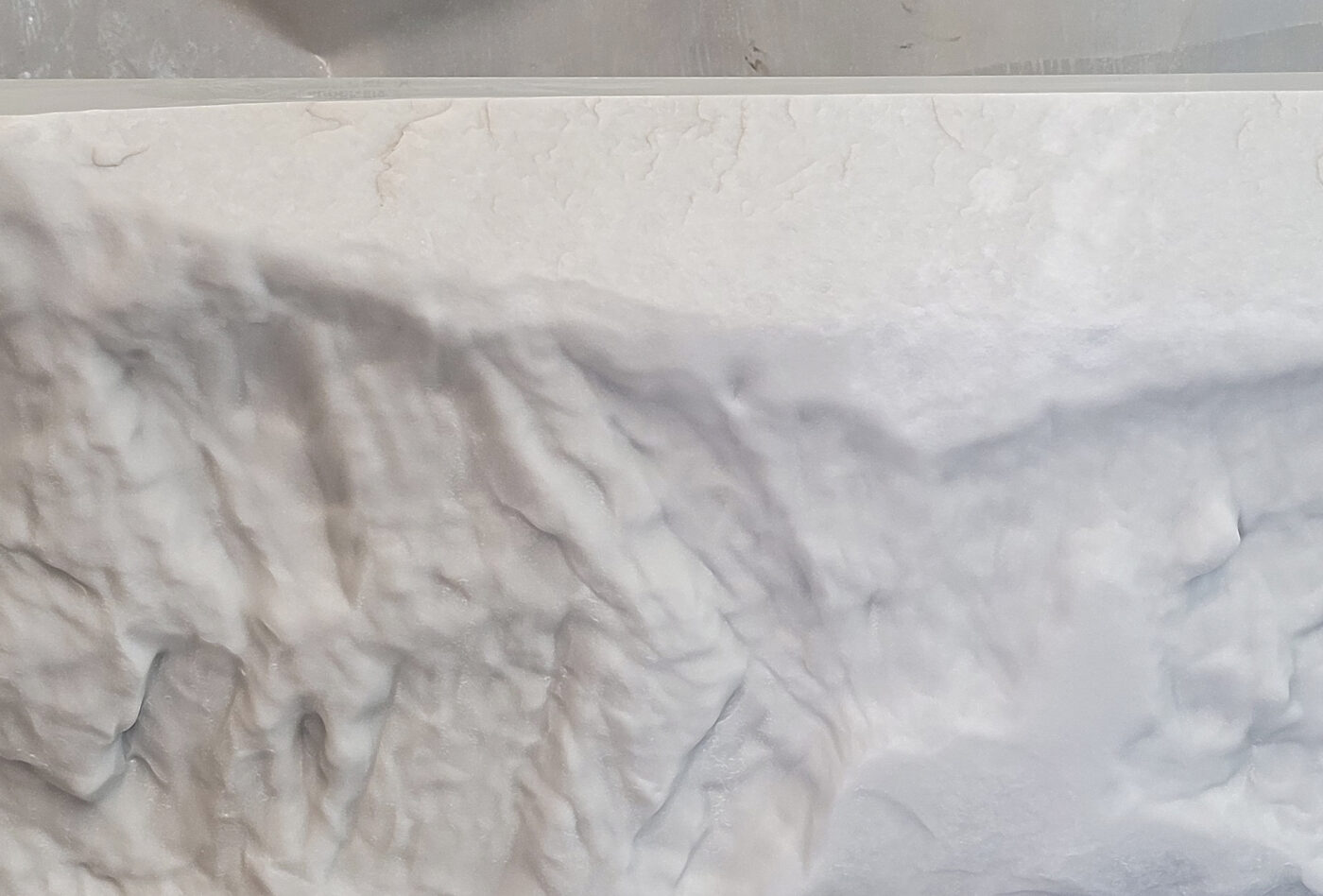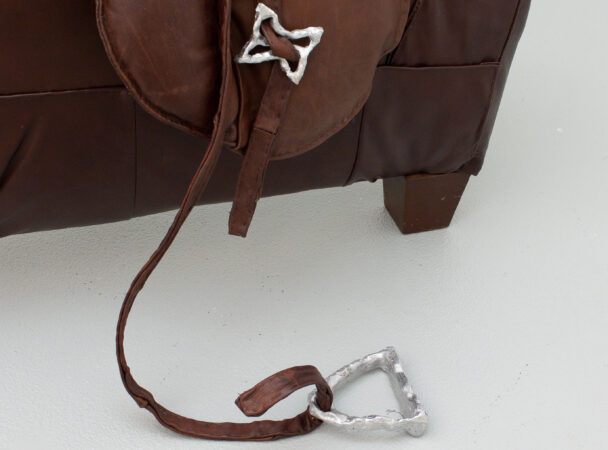
Marie-France Brière
Champ de contraintes
09.06–10.12.2024
Room 1
09.06–10.12.2024
Room 1

Opening
Friday September 6, 5pm
Artist
Marie-France Brière
In the 1980s, Marie-France Brière travelled to Pietrasanta, Italy, a city of medieval origin in Tuscany known as the capital of working artistically with many materials. For centuries, Pietrasanta’s main activity has been devoted to art, namely bronze alloying and marble carving. The marble is extracted from the nearby Carrara quarries, which have been overexploited since the Roman era. Brière remained in Italy long enough to master her technical knowledge of the stone’s meticulous and labour-intensive treatment. In a sense, she learned to “read and write” a material that has been used for thousands of years.
Brière returned to Montreal with blocks of Carrara marble, intent on pursuing her goal: to reshape the space-time of stone through its strata and interstices. To this day, by chiseling layers of meaning into this irreversibly formed material, she still finds potential for transformation it holds—its simultaneous revelation and disappearance. Marble is an amalgamation of (un)predictable pressure, which, to say the least, is hard to interpret.
The title of this exhibition, Champ de contraintes, refers to a polysemous term “stress tensor,” introduced by Baron Augustin-Louis Cauchy in 1822, which defines the distribution of stress within a given material or structure. In structural geology and tectonics, the term is paleostress, which characterizes the anisotropic element of the stress tensor and is responsible for distortions such as folds, faults, or cleavages. In her sculptural volumes, Brière pays particular attention to the distribution of the point of stress she exerts as she sculpts her surfaces.
Throughout her most recent body of work, Brière was ostensibly guided by a 2005 essay by the feminist philosopher Catherine Malabou titled La plasticité au soir de l’écriture. In her studio, Brière experiments with—or interprets—her marble like the blank pages of an unexpectedly pliable palimpsest. For Malabou, plasticity is a malleable quality that enables continuous transformation, influencing the way we react and adapt to evolutions. We should understand plasticity as a kind of reading-writing: the propensity of a material to reshape itself, to change its configuration under the effect of another force—either intrinsic or extrinsic to itself. In other words, Brière materializes the invisible intervention of her reading of the stone to then inscribe shapes in the making. She becomes engaged with the potential movement of semantic substance.
In this exhibition, monoliths of marble are presented both vertically and horizontally, supported by thin aluminum pieces, some of which are covered in felt cloth. Their arrangement—a kind of path marked by various imposing structures—shifts from circulation to contemplation. The surfaces of these parallelepipeds can be examined from nearly every direction. Friction and tension is felt in their blemished textures. The gestural reliefs, raised in projections or hollowed into grooves, mimic the erosion of mines. The disproportion between the act of extracting the materials and the evocation of their proximity relative to their site of origin—despite the actual distance—can be felt in each of these pieces. Among this group sits a golden sculpture of polished brass. Its reflections are cast here and there around the room, like an aura.
In Champ de contraintes, we read and translate the marble’s veining. Marie-France Brière’s body of work converges at this propensity for vernacular language; one that is both immemorial and immutable.
— Jean-Michel Quirion










